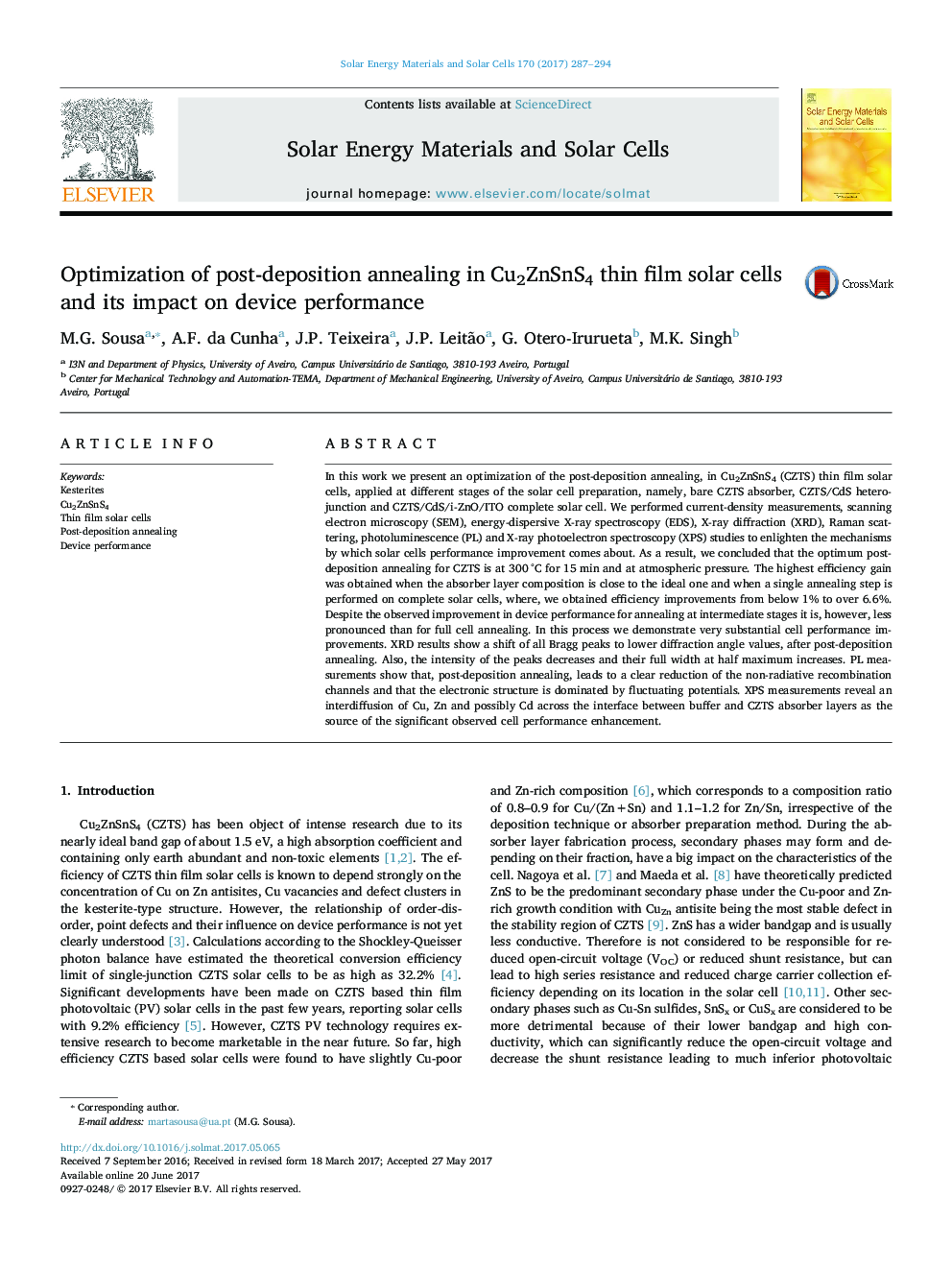| Article ID | Journal | Published Year | Pages | File Type |
|---|---|---|---|---|
| 6456860 | Solar Energy Materials and Solar Cells | 2017 | 8 Pages |
â¢Optimization of the post-deposition annealing in Cu2ZnSnS4 thin film solar cells.â¢The optimum annealing conditions are at 300 °C for 15 mins and atmospheric pressure.â¢Efficiency enhancements by a factor of 47 have been obtained.â¢Better understanding of the processes in the cell upon post-deposition annealing.â¢Boost the cell efficiency from under 1% to over 6.6%.
In this work we present an optimization of the post-deposition annealing, in Cu2ZnSnS4 (CZTS) thin film solar cells, applied at different stages of the solar cell preparation, namely, bare CZTS absorber, CZTS/CdS heterojunction and CZTS/CdS/i-ZnO/ITO complete solar cell. We performed current-density measurements, scanning electron microscopy (SEM), energy-dispersive X-ray spectroscopy (EDS), X-ray diffraction (XRD), Raman scattering, photoluminescence (PL) and X-ray photoelectron spectroscopy (XPS) studies to enlighten the mechanisms by which solar cells performance improvement comes about. As a result, we concluded that the optimum post-deposition annealing for CZTS is at 300 °C for 15 min and at atmospheric pressure. The highest efficiency gain was obtained when the absorber layer composition is close to the ideal one and when a single annealing step is performed on complete solar cells, where, we obtained efficiency improvements from below 1% to over 6.6%. Despite the observed improvement in device performance for annealing at intermediate stages it is, however, less pronounced than for full cell annealing. In this process we demonstrate very substantial cell performance improvements. XRD results show a shift of all Bragg peaks to lower diffraction angle values, after post-deposition annealing. Also, the intensity of the peaks decreases and their full width at half maximum increases. PL measurements show that, post-deposition annealing, leads to a clear reduction of the non-radiative recombination channels and that the electronic structure is dominated by fluctuating potentials. XPS measurements reveal an interdiffusion of Cu, Zn and possibly Cd across the interface between buffer and CZTS absorber layers as the source of the significant observed cell performance enhancement.
Graphical abstractDownload high-res image (224KB)Download full-size image
